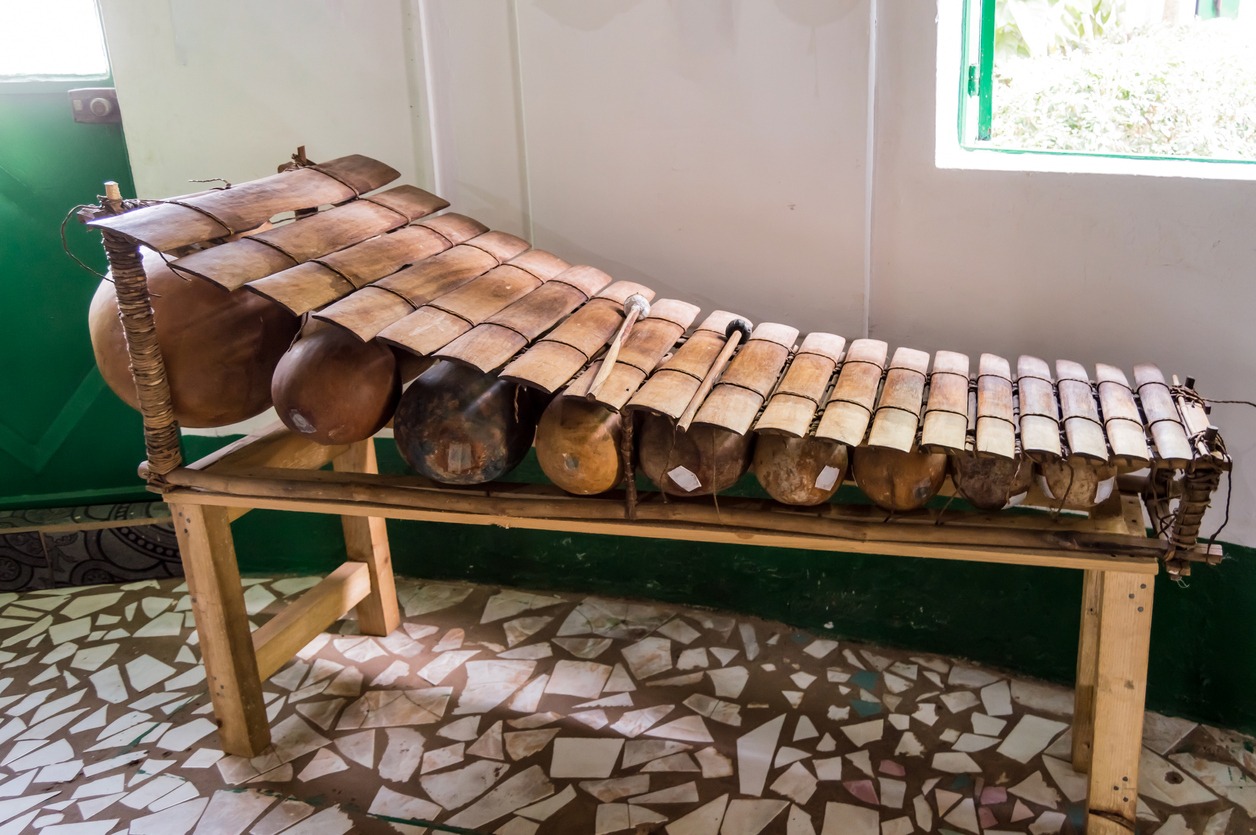The balafon is a type of struck idiophone as categorized in the Hornbostel-Sachs musical instrument. In the Malinke language, the instrument balafon is a combination of two words ‘Balan,’ the name of the instrument, and ‘fon,’ which means to play. Therefore, the word balafon is the act of playing the instrument, Bala. The word Bala is also used as a name for the large bass balafon in the region of Bobo Dioulasso and Kolokani. However, this bass balafon has long keys and calabashes for the amplification. Interestingly, there were also balafons that were called balani. The balani has small keys of about three to four centimeters long and small, high-pitched calabashes for amplification.
It is also an instrument that resembles a xylophone, which is closely related to Western African ethnolinguistic groups. These groups includethe Senoufo, Mande, Gur, particularly, the Mandinka or Malinke, and other ethnic groups across West Africa, from Guinea to Mali.
This instrument was believed to be developed from the South American and South African instrument that is now called the marimba, a percussion instrument. Interestingly, the oral history of the balafon instrument dated back to the rise of the Mali Empire in the early 12th century CE. Subsequently, in 1352, a Moroccan traveler and scholar, Ibn Battuta, reported the existence of the balafon and ngoni. Ngoni is a West African stringed instrument, and the balafon is a percussion instrument. Ibn Battuta then presented these at the court of a Malian ruler named Suleyman Keita.
In the 17th century, European visitors described the balafon as a modern instrument. With the existence of the Atlantic Slave Trade, some balafon players were brought to America. In fact, the Virginia Gazette recorded that African-Americans were playing an instrument that looks like a balafon. However, during that time, the instrument was called barrafoo. By the mid-19th century, other North American references to the balafon instrument eventually die out.
In the 1980s, the balafon gained its resurgence in the growth of African Folk Music. One of the notable balafon players is the Rail Band, which was eventually known as the Super Rail Band. It is a Malian band that was formed in 1970. Aside from the Rail Band, Richard Bona, a Cameroon-born jazz musician, is also notable for playing the balafon. More balafon artist includes Mamadou Diabate, Danny Elfman, Dominic Howard, and several others.
Later on, the balafon’s traditional style and distinctive sound were transferred to western instruments. One example of that is the guitar instrument from Eastern Guinea, which adapted the playing style of the balafon.
There are several variations for the balafon instrument. In Manding languages, it is called the balafon. Meanwhile, the same instrument was called balangi in Sierra Leone and gyil for the ethnic groups Lobi, Dagara, and Gurundi, from Ivory Coast, Burkina Faso, and Ghana. Similar instruments were also played in some parts of Central Africa, such as the instrument called palaku,as denoted by the ancient Kingdom of Kongo.
Furthermore, a balafon can have a fixed key or free-key. Fixed key balafons are instruments where keys are strung over fixed frames and with graduated-size calabash resonators underneath. These keys were suspended using leather straps above the wooded frame, while the calabashes gourd has small holes on each. The gourds were also covered with either thin spider’s egg sac filament, cigarette paper, or plastic film in order to produce a nasal-buzz timbre.
On the other hand, free-keys balafons have independently placed keys on the padded surface. The balafons usually have about seventeen to twenty-one keys, tuned in either tetratonic, pentatonic, or heptatonic scale, depending on the musician’s culture. Also, it can produce eighteen to twenty-one notes, although some other balafons were built to make fewer notes of about seven to sixteen notes.
Balafon keys were usually made out of bene woods that were dried slowly over a low frame. In tuning the keys, these woods were shaved off through the underside. However, in sharpening or flattening these keys, the woods were taken off the middle. These balafons also come with two gum-rubber mallets used in playing the said instrument. Additionally, the balafon can be played while seated on a low stool, or while standing with the balafonsuspended using a waist or shoulder sling hook.

